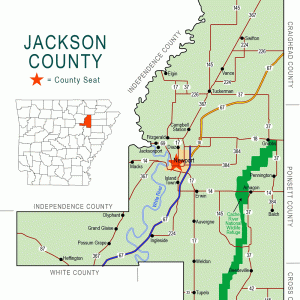calsfoundation@cals.org
Campbell Station (Jackson County)
| Latitude and Longitude: | 35°40’06″N 091°14’41″W |
| Elevation: | 233 feet |
| Area: | 1.70 square miles (2020 Census) |
| Population: | 232 (2020 Census) |
| Incorporation Date: | April 17, 1953 |
Historical Population as per the U.S. Census:
|
1810 |
1820 |
1830 |
1840 |
1850 |
1860 |
1870 |
1880 |
1890 |
1900 |
|
– |
– |
– |
– |
– |
– |
– |
– |
– |
– |
|
1910 |
1920 |
1930 |
1940 |
1950 |
1960 |
1970 |
1980 |
1990 |
2000 |
|
– |
– |
– |
– |
– |
140 |
218 |
297 |
247 |
228 |
|
2010 |
2020 |
|
|
|
|
|
|
|
|
|
255 |
232 |
|
|
|
|
|
|
|
|
Campbell Station—originally known only as Campbell—is a city in Jackson County located along the Union Pacific Railroad tracks and U.S. Highway 367. It is adjacent to the city of Diaz (Jackson County) and is between Newport (Jackson County) and Tuckerman (Jackson County). Campbell Station claims a portion of the Rock ‘n’ Roll Highway 67.
The earliest settlements in Jackson County, such as Jacksonport (Jackson County) and Newport, were stops along the transportation corridor of the White River between the Mississippi River and Batesville (Independence County). The rest of the county was dominated by hardwood forests and farmland. Jacksonport was significant as a crossroads, as well as a common White River stop, as the Southwest Trail connecting southeastern Missouri to northwestern Texas used the ferry at Jacksonport; another road from Jacksonport led across northern Arkansas to Fort Smith (Sebastian County).
Even before the Civil War, surveyors for the Cairo and Fulton Railroad prepared a route parallel to the Southwest Trail; the flat land of Jackson County was especially promising for the forthcoming railroad, and preparations were well under way to lay rails north of Newport on a route through the current location of Campbell Station. Financial troubles in 1857, followed by the Civil War, delayed construction of the railroad for several years. By the time trains were running on rails through Jackson County, the Cairo and Fulton had become part of the St. Louis, Iron Mountain and Southern Railroad. Campbell, like Diaz and Tuckerman, was a stop for steam engines to be resupplied with water and with wood for fuel. It was probably named for a railroad worker, since no settlers by the name of Campbell have been identified in the area.
By 1889, Campbell was identified as “a station on the St. Louis, Iron Mountain & Southern Railway, five miles northeast of Newport.” No businesses were associated with the stop, and no post office was ever established at Campbell. Jackson County School District No. 27 was created at Campbell sometime in the nineteenth century; eventually, it was absorbed into other area school districts during the era of school consolidations. In the 1920s, U.S. Highway 67 was built through Campbell on a route parallel to the railroad tracks. During World War II, an air base used for training American pilots was built east of Campbell; the Newport Air Field operated between 1942 and 1946, bringing many military personnel and their families into the area. Ten cabins were built in Campbell to provide housing for the fliers; one cabin has remained into the twenty-first century. The Marines often patronized a night club in Campbell known first as Beverly Gardens and then as The Belvedere.
Campbell Station incorporated as a second-class city in the 1950s. The city’s first mayor, W. O. Keeter, donated land to the city for a park on which the city hall was built; a Baptist church was also erected in Keeter Park. A water system was added in 1970, with water purchased from Diaz. Like Newport and Diaz, Campbell Station was bypassed by the four-lane U.S. Highway 67, but the old road is still in use, designated as Highway 367. In 1983, the community of Diaz attempted to annex Campbell Station, but citizens in the latter community voted down the proposal.
The most famous resident of Campbell Station was Harry Gamble, a carpenter and cabinetmaker who created the pews for the Baptist Church. His woodworking company, Campbell Station Cabinet Shop, was purchased by Wayne Inc., a maker of ambulances; after it closed its ambulance line in 1980, its Campbell Station division was acquired by Taylor Made Ambulance. The latter company continued to operate in Campbell Station for several years, until it purchased a car lot in Newport and relocated its operations.
For additional information:
The Goodspeed Biographical and Historical Memoirs of Northeastern Arkansas. Chicago: Goodspeed Publishing Co., 1889.
Jackson County Proud! 1988 Follies. Newport, AR: 1988.
Steven Teske
Butler Center for Arkansas Studies
 Jackson County Map
Jackson County Map 




Comments
No comments on this entry yet.